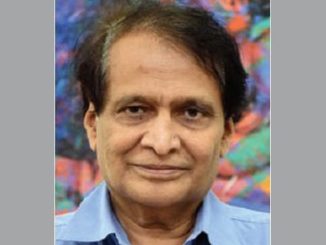Regulatory commissions play an instrumental role in the power distribution segment, regulating tariffs for generating companies, issuing licences for interstate operations, adjudicating disputes and enhancing stakeholder access to information. Besides, commissions also levy fees, specify grid codes and enforce standards for service quality, continuity and reliability by licensees. In essence, they serve as a key authority ensuring fairness and adherence to standards in the power distribution segment. With concerns over prolonged litigations leading to regulatory assets and higher tariffs, state regulators also face the critical task of ensuring affordable and timely electricity provision to consumers.
At a recent conference organised by Power Line, Arun Goel, member, Central Electricity Regulatory Commission; Rajesh Dangi, secretary, Delhi Electricity Regulatory Commission; and S.N. Kalita, member (technical), Assam Electricity Regulatory Commission, discussed the power distribution segment’s outlook, along with the issues and their priorities…
Challenges in power distribution
Increasing renewable energy presents challenges in efficient storage and transmission cost management, requiring strategic planning by distribution companies to mitigate consumer impact. Also, private sector involvement is crucial for green energy expansion, relying on timely payments and reasonable tariffs for profitable returns. However, discoms grapple with challenges such as delayed tariff finalisation, unmet subsidy promises, insufficient surpluses and high losses.
India is one of the fastest growing large economies, likely to grow 6 and 9 per cent in the coming decade. The country’s per capita consumption of about 1,250 units is about one-third of the world’s average consumption and one-tenth compared to that in developed countries. According to the Central Electricity Authority’s estimates, by 2032, the per capita consumption is expected to reach 2,100 units, implying a 6 per cent compound annual growth rate (CAGR). The current installed capacity of 460 GW (as of March 2023) is likely to increase to 900 GW, implying a CAGR of roughly 9 per cent. The country’s renewable energy capacity, which was 172 GW as of March 2023, is expected to increase to 596 GW, at a CAGR of 15 per cent per annum. Peak demand is projected at 366 GW by 2032.
Corresponding to the increase in generation, transmission capacity also has to be added, which requires huge investments. Further, to meet the environment standards set by the environment ministry, is expected to be an additional 15 paise per unit be added to the generation costs. Hence, going forward, there is a trilemma between affordable, reliable and clean power. Huge investments are required in the sector and the government alone will not be able to meet these requirements.
Distribution companies are the cash registers of the entire system and hence, it is very important that they are viable. Discoms need to generate surplus by which they should not only be able to pay generators and transmission companies but also have enough surplus to upgrade their distribution system and technology and smart meters. Their tariffs have to be cost effective and the gap between the average cost of supply and the average revenue realised has to be minimal or positive for discoms to generate surplus and invest in their infrastructure. At the same time, at the state level, the job of a regulator is more difficult because state regulators have to deal directly with consumers and ensure that the consumer is getting power at the right price. Also, it has to ensure that the generator or the transmission company gets at least, if not less, something above the reasonable margin or profit. Hence, a balance should be maintained between both consumers and producers.
Evolving regulatory requirements
Further, with growing renewable energy, the challenge lies in the storage of electricity. While renewable power costs are coming down, it involves a cost to storage. Hence, the role of the regulator is to bring in system efficiency along with best prices. Further, regulators need to encourage green open access and they also need to ensure that wheeling charges are not exorbitant.
With the adoption of smart meters, loss-prone areas are being prioritised by discoms. Further, time-of-day (ToD) tariffs are being implemented even at the non-industrial and non-commercial level. Moreover, with distribution losses coming down, there is a need to add resource adequacy. At the distribution level, we need to increase redundancy. Also, tariffs for discoms need to be specified on time. Another challenge is the prolonged litigations that privatisation brings about. As a result, regulators are not able to move ahead and issue timely orders, leading to an accumulation of regulatory assets. These have to be recovered from the consumer eventually, which ultimately leads to tariff shocks. Another crucial aspect is to increase the renewable energy share. By 2030 we need to have 50 per cent consumption from renewable energy, which requires proper power purchase agreement planning, along with load planning and installation of hybrid and RTC power capacity. The goal for discoms is to minimise the burden of consumers. Further, discoms need to work on reducing aggregate technical and commercial losses and improving billing and collection efficiencies, which can be effectively done through smart meters.



